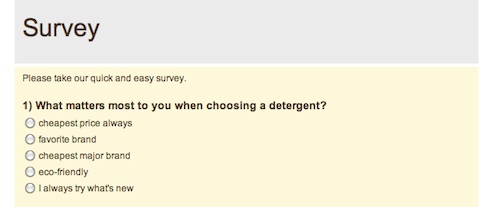
There are a few Benchmark blogs on demographics, and we’ll likely do many more since it’s essential to target email marketing. But while it’s easy to understand segmenting your list by tangible, statistical facts (zip code, household size, income level, age range, etc.), wrapping your head around how exactly to segment psychographics might not be readily apparent.
Psychographics Are Lifestyle or Value-Based
Psychographics define your audience segment by psychological characteristics. Some will say it’s all about your customers’ lifestyles, values, opinions, attitudes and beliefs. What makes the customer tick? What are his/her/their motivations? How do they identify themselves in what are largely subjective areas?
Examples of Psychographics
Some might seem themselves as “price-sensitive.” Or they may very well be “price-sensitive” without ever putting themselves in a category. You may encounter customers who are “sports-oriented,” “homebodies,” or even “thrill seekers.” If your business sells vacation packages that can vary from relaxing log cabin getaways to whitewater rafting tours to golfing or hiking packages, knowing how your customers fit into these segments helps you pinpoint exactly what info to send to whom.
You Can Further Segment the Categories
“Health-conscious” might be at the polar opposite end of a self-reporting “fast-food junkie,” but there’s room for plenty of segmentation within these categories. These broad categories are useful for a supermarket, but a health food store is going to want to further break down its healthy patrons into specialized psychographic segments so that it can market effectively too. Knowing who is opposed to certain types of food or growing practices and who isn’t can be a major plus.
Combine Psychographics for More Power
Let’s say you are the neighborhood grocer, and you know who are your “health conscious” customers and who are your “always-in-a-rush” customers. You can probably guess that sending a targeted email campaign about your new super healthy, slightly pricy microwaveable dinners (is this an oxymoron?) to this combined segment will yield good results.
So How Do You Get This Info Anyway?
Admittedly, having your cashiers ask strange questions about people’s values at each transaction is probably inappropriate. You might see this as only slightly easier info to collect during customer service contact. Lucky for you that you already know about email marketing!
Online Surveys & Polls Are Your Friends
Your account comes with online surveys for free, so put it to use. It’s so easy to send out a simple, attractive poll via email. You can customize your own questions and then give your readers a chance to choose from your preset answers.
You can send this survey out by itself or within the body of a longer email newsletter. You can also put these up online on your favorite webpage along with an email address field. As people answer, new fields are built into your list, helping to segment your customers by their answers.
In the above example, you can put people into psychographic categories: “brand-loyal,” “environmentally-aware,” “value shopper,” etc.
Signup Boxes Work Too
We’ve mentioned in earlier blogs that signup boxes are great places to start the segmenting process. A word of caution, though: If you make the sign up process too long with too many questions, you’re going to get far less list subscriptions. Pick your questions wisely and keep it short.
Try It Out
The best way to get going on this is to just try it out. Creating a survey or poll is fast. Try it out and see what happens. Advertisers and marketers use the power of psychographics to write the right message for the right product for the right people. Now you can too!





